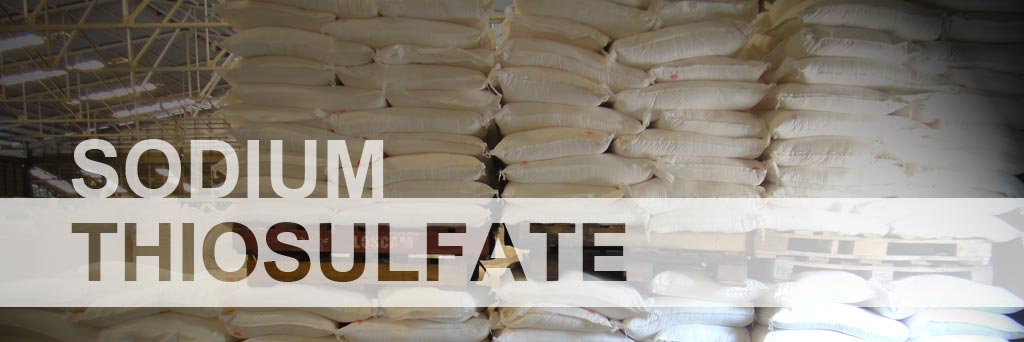Sodium Thiosulfate (Na2S2O3), also called sodium hyposulfite, is a colorless crystalline compound that is more familiar as the pentahydrate, Na2S2O3•5H2O, an efflorescent, monoclinic crystalline substance also called sodium hyposulfite or "hypo."
The thiosulfate anion is tetrahedral in shape and is notionally derived by replacing one of the oxygen atoms by a sulfur atom in a sulfate anion. The S-S distance indicates a single bond, implying that the sulfur bears significant negative charge and the S-O interactions have more double bond character. The first protonation of thiosulfate occurs at sulfur.
On an industrial scale, Sodium Thiosulfate is produced chiefly from liquid waste products of sodium sulfide or sulfur dye manufacture. In the laboratory, this salt can be prepared by heating an aqueous solution of sodium sulfite with sulfur.
In analytical chemistry, the most important use comes from the fact that Sodium Thiosulfate reacts stoichiometrically with iodine, reducing it to iodide as it is oxidized to tetrathionate. This particular use can be set up to measure the oxygen content of water through a long series of reactions. It is also used in estimating volumetrically, the concentrations of certain compounds in solution (hydrogen peroxide, for instance), and in estimating the chlorine content in commercial bleaching powder and water.
For gold extraction, Sodium Thiosulfate is one component of an alternative lixiviant to cyanide for extraction of gold. It forms a strong complex with gold(I) ions. The advantage of this approach is that thiosulfate is essentially non-toxic and that ore types that are refractory to gold cyanidation (e.g. carbonaceous or Carlin type ores) can be leached by thiosulfate. |



